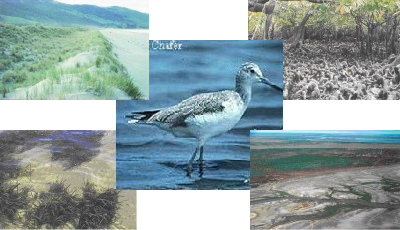Habitat loss and its effect on biodiversity is a growing global concern. The health of coastal waterways depends on the conservation of a diversity of coastal habitats that provide shelter, food, breeding grounds, nursery areas and migratory corridors for marine life, and that stores water, buffers water quality and resists storm-related erosion. Wetland loss or degradation limits the amount of habitat that can support healthy populations of marine organisms and other wildlife.

Relevant biophysical indicators
Habitat extent indicators document the areas of some coastal marine habitats, and can be viewed in time-series to monitor change. The following habitat extent indicators are used for State of the Environment reporting for Estuaries and the Sea1:
- seagrass areas;
- mangrove areas;
- saltmarsh areas;
- intertidal mudflat/sand flat areas; and
- beach and dune areas.
In addition, the Habitat Variability Index fact sheet shows the suite of habitats that should be found in each of different coastal waterway types (e.g. tide-dominated deltas, tide-dominated estuaries, tidal creeks, wave-dominated deltas, wave-dominated estuaries and strandplains/coastal lagoons). If a ‘diagnostic’ habitat is missing where it should be present, that waterway should be flagged for a more comprehensive investigation.
Human activities and uses that give rise to habitat loss
The various human activities and uses that threaten the ecological integrity of coastal habitats are outlined in the fact sheets listed above (follow the links).
More information on habitat removal/disturbance.
- Ward, T., Butler, E. and Hill, B. 1998. Environmental Indicators for National State of the Environment Reporting, Commonwealth of Australia, pp. 81. ↩


